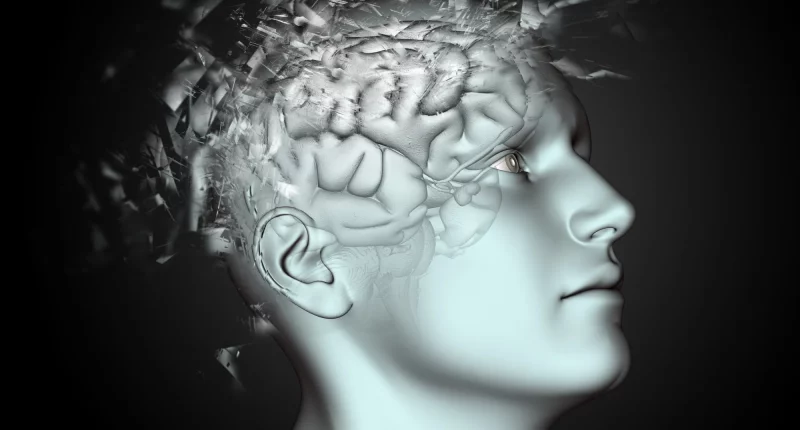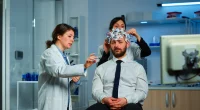A brain aneurysm, also known as a cerebral aneurysm, happens when a part of a blood vessel in the brain becomes weak. This weak spot forms a balloon-like bulge that contains blood.
The walls of the blood vessel around an aneurysm are not as strong, making it more likely to burst rupture, or open. If an aneurysm ruptures, it can cause severe brain damage or a stroke, which is very dangerous and can be life-threatening. However, not all aneurysms will rupture.
People who have an aneurysm might need to see their doctor regularly to make sure the aneurysm isn’t getting bigger. If an aneurysm is large, a healthcare provider might need to perform surgery to eliminate it to prevent any dangerous complications.
Brain Aneurysm Statistics
The National Institute of Neurological Disorders and Stroke says that brain aneurysms affect about 3–5% of the population in the United States at some point in their lives. They are more often in women than in men and usually occur in adults aged 30 to 60 years.
The Brain Aneurysm Foundation reports that injured brain aneurysms cause only about 3–5% of all latest stroke events. However, if it does rupture, it is very serious. About 40% of people with a ruptured aneurysm die, and 15% of these deaths happen before the person can get to the hospital.
Symptoms and Early Warning Signs
Aneurysms, especially larger ones, may cause signs before they break, although most aneurysms do not show any signs at this period.
Symptoms of an unruptured aneurysm can include persistent pain behind or above the eye, weakness, numbness, or twitching on one part of the face. Changes in vision, like blurriness or double vision, and a dilated pupil in a single eye are also possible indicators.
Sometimes, an aneurysm can leak before it breaks, known as a sentinel rupture or bleed. This can lead to a sudden and severe headache, often described as a sentinel headache. It’s crucial to note that this headache may be different from any previous headaches in intensity or pattern.
Other signs of a sentinel rupture may involve nausea, vomiting, changes in vision, confusion, a stiff neck, sensitivity to light, fainting, seizures, or even cardiac arrest.
If anyone experiences symptoms suggestive of an aneurysm, immediate medical attention is necessary. For those already diagnosed with an unruptured aneurysm, informing emergency medical personnel about the condition is vital for appropriate care.
Causes and Risk Factors
Brain aneurysms are more frequently seen in women than men, and they tend to affect adults aged 30 to 60 years more often. Certain lifestyle and genetic factors can weaken the lining of blood vessels, significantly increasing the chance of developing an aneurysm.
Genetic factors that weaken blood vessels, such as polycystic kidney disease, arteriovenous malformations, and certain connective tissue disorders, can predispose individuals to aneurysms. A family history of aneurysms, where a close relative like a child, parent, or sibling has had one, also increases the risk.
Other risk factors include uncontrolled hypertension, substance use disorders involving medicines that increase blood pressure (like cocaine and amphetamines), and intravenous drug use. Smoking, the presence of head injuries, brain tumors, and infections affecting the arteries also contribute to the risk profile for developing brain aneurysms.
Diagnosis of Brain Aneurysms
Doctors use different imaging techniques like MRI scans and CT scans to detect some brain aneurysms, but a cerebral angiogram is needed for a definite diagnosis.
During a cerebral angiogram, a healthcare provider inserts a tube known as a catheter into a vessel of blood in the groin and guides it up into the vessels of the brain using X-ray images. They inject a dye into these vessels, which highlights the blood flow and any abnormal structures.
This procedure helps the doctor measure the seriousness and size of the aneurysm and determine its type accurately. This information is crucial for deciding the best treatment options for the patient.
Treatment of Brain Aneurysms
Not all aneurysms require immediate medication. For small aneurysms, doctors may suggest observing them regularly instead.
Choosing the best treatment depends on several factors, including the person’s age, any existing medical or neurological conditions, whether the aneurysm has been injured before, the chance of it rupturing in the future, and the history of the family of subarachnoid hemorrhages.
Even if an aneurysm is small, someone with a family or personal history of aneurysm rupture might still need treatment.
Treatment options typically include either an endovascular procedure or surgery. During an endovascular procedure, a surgeon threads a catheter through the groin up to the aneurysm and fills it with metal coils or a stent to redirect blood flow away from the aneurysm, preventing it from rupturing.
Surgical treatment involves a procedure on the brain performed following general anesthesia. This process typically needs a hospital stay of several days, and sometimes the person’s head needs to be shaved. During surgery, the surgeon places a clip on the aneurysm to block blood flow into it and reduce the risk of rupture.
Complications of Brain Aneurysms
An unruptured brain aneurysm usually doesn’t lead to any complications. But the aneurysm ruptures, it can cause severe and long-lasting health problems, and in some cases, it can lead to death.
Complications that can arise from a ruptured brain aneurysm include:
- Hemorrhagic stroke, which occurs due to brain bleed.
- Rebleeding, where an aneurysm ruptures again after the initial bleed.
- Changes in the brain’s sodium levels, which may result in permanent brain failure.
- Vasospasm, is a condition where arteries in the brain constrict, reducing blood flow and potentially leading to serious brain damage or another stroke.
- Hydrocephalus, a condition where there’s an accumulation of cerebrospinal fluid in the brain, leading to dangerous pressure that can damage brain tissue.
Outlook
Of those who survive a ruptured aneurysm, around 25% may still face complications leading to death within six months. Additionally, approximately 66% experience lasting neurological damage.
Because of these risks, early detection and treatment of aneurysms are crucial. Getting prompt medical help significantly improves the possibility of survival and reduces the impact of long-term neurological issues.
Summary
Brain aneurysms, weak spots in brain arteries, can lead to severe complications if they rupture, causing hemorrhagic strokes or other serious conditions. Symptoms include severe headaches and neurological changes. Diagnosis involves imaging like CT scans and angiograms for accurate assessment.
Treatment options include endovascular procedures or surgery, depending on the aneurysm’s size and risk factors. Complications from ruptured aneurysms can be life-threatening, emphasizing the importance of early detection and treatment. Prevention through a healthy lifestyle and regular monitoring of those at risk can help reduce the likelihood of aneurysm rupture.
External links









